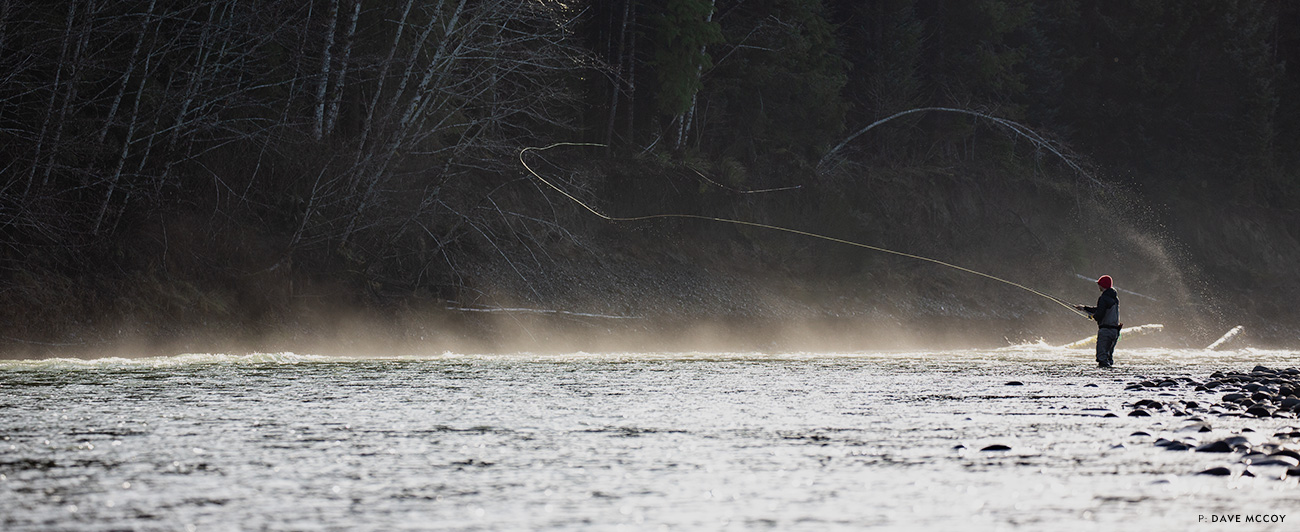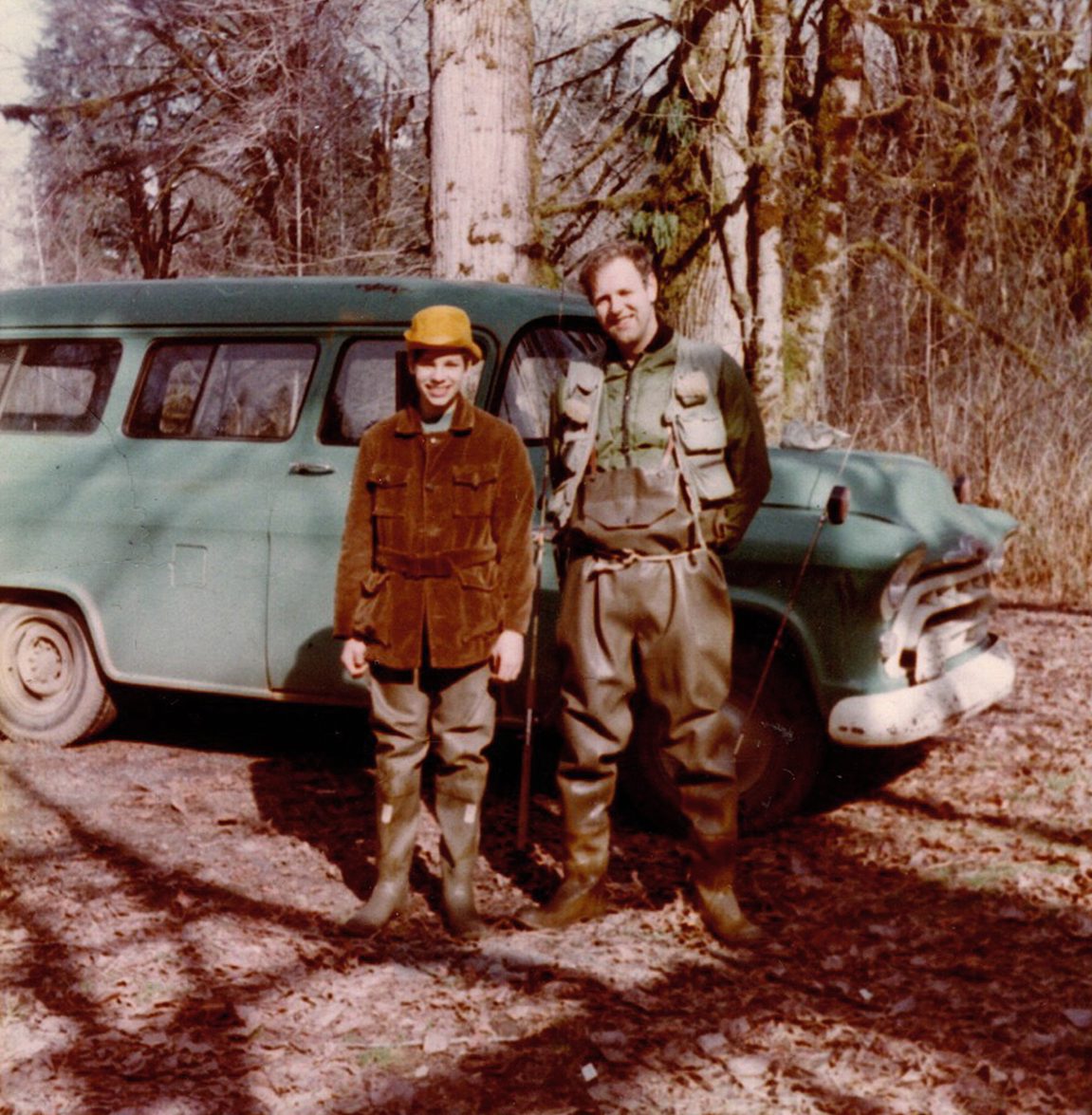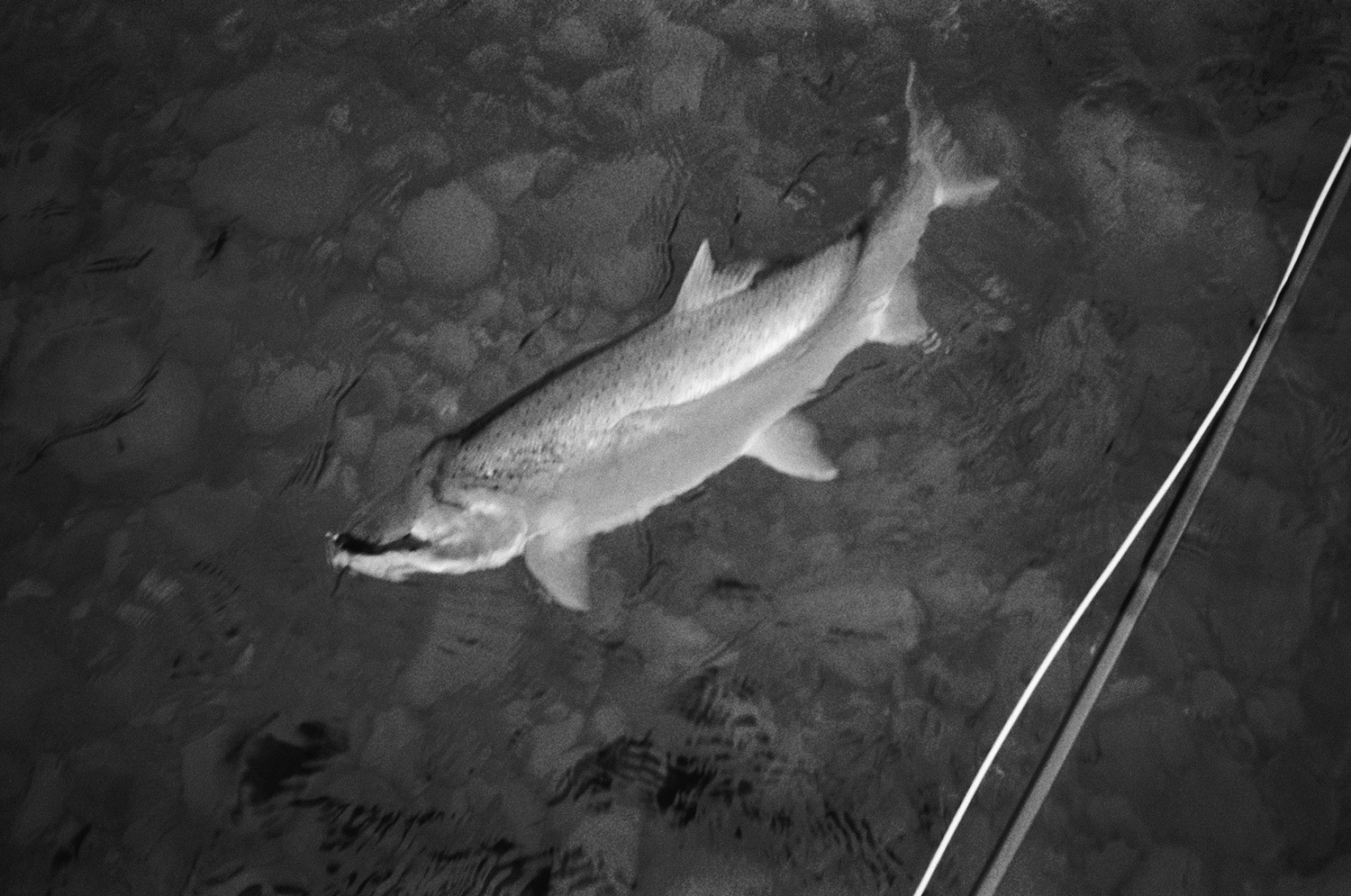Open Water
ALWAYS CHANGING, ALWAYS THE SAME
First published in Volume 15, Issue 2 of The Flyfish Journal
In 1969, an obsessed uncle led me—then 12 years old—to my first encounter with a wild winter steelhead, drift fishing an Okie Drifter on an Olympic Peninsula river in western Washington state. Over the years, he and I would log quite a bit of time together bombing around the OP exploring and fishing its rivers—the Hoh and Queets being our favorites.
Spending time on the mercurial rivers of the OP, including the Hoh, inevitably you observe the waters flood and separate into channels before braiding themselves back together. Always changing, rivers like the Hoh are evidence of something whole, alive, more than a sum of parts.
On those steelhead odysseys, my uncle would occasionally bring up cultural topics of the late ’60s, such as the environment and the exploitive commercialization of natural resources.
“How can ecology and economy work together?” he’d say.
To questions such as this, I was dumbfounded. In those days, I just went fishing and really couldn’t be bothered to care about much else. Answering big questions seemed overwhelming when all I cared about was hooking a steelhead.
Later in my angling life those questions reemerged. My introspection led to an overt understanding that my opportunity—let alone my angling success—is not, and cannot, be my only priority. Like the Hoh itself, over the years new connections were made—decades of experience acting as proverbial channels, often separating, always evolving.
Twenty-three years ago, I collaborated with other concerned anglers to form a conservation group—the Wild Steelhead Coalition—determined to be part of the solution to increase wild steelhead for the future along with our ability to fish for them responsibly. We believed—and still do—that responsibility shouldn’t be constrained to the bare minimum, i.e. catch and release using single barbless hooks.
Instead we aspire to provoke a sense of personal accountability, to give back more than we take.
Angling and advocating for wild steelhead should not be construed as hypocrisy, but instead should force a consciousness on each and every angler’s piscatorial footprint.
above Rich Simms and his Uncle Kenny on Washington state’s Olympic Peninsula, 1969. Photo: Rich Simms Family Archives
Angling and advocating for wild steelhead should not be construed as hypocrisy, but instead should force a consciousness on each and every angler’s piscatorial footprint. The hard truth in angling for wild steelhead today is that it includes a sense of ownership, of personal stewardship, of action to be taken and duty to be served. Bemoaning limitations and lobbing blame is a waste, negativity with little action and fewer results. There is plenty to do and nobody needs permission. Nothing is preventing each of us from being the change we wish to see in the recovery of wild steelhead. Fishing responsibly for wild steelhead—by, for example, limiting the number of fish we encounter and doing our best to ensure those we do encounter are played quickly and released safely—while donating as much time to conserving the resource can help exceed our personal steelhead footprint as we remain engaged, continuing our direct relationship with the fish, the environment and our angling community.
It’s been a long time since my uncle first quizzed me while traveling to the river. During that time, we have all witnessed the “tragedy of the commons” and the shifting baseline syndrome that is now, unfortunately, the norm.
I can’t predict exactly how ecology and the economy are going to work together in perfect harmony—those questions still overwhelm. But, if a lifetime of angling for steelhead has taught me anything, I’m confident that if we don’t do something—if we don’t hold ourselves personally accountable and if we don’t lead by example from our bully pulpit—we’re only guaranteed more of the same.
above The best camera is the one you have with you. In this case it was a bright yellow waterproof point-and-shoot Minolta, scored on Craigslist. It’s small enough to keep in a wader pocket, and dummy-proof due to being a point-and-shoot. What’s not dummy-proof are steelhead anglers, fishing the same run over and over and over until, somehow, a fish happens to be there, crushes your fly and makes it all worthwhile. Photo: Copi Vojta
Thomas McGuane summed it up, saying, “We have reached the time in the life of the planet, and humanity’s demand upon it, when every fisherman will have to be a river-keeper, a steward of marine shallows, a watchman on the high seas. We are beyond having to put back what we have taken out. We must put back more than we take out. Whether we like it or not we are responsible even though our impact is small.”
If I could have uttered that quote to my uncle all those years ago, a long pause would have filled the dark cab of the ’57 Chevy Carryall. As we cruised down Highway 101, he would have pulled a match across the dashboard slowly to illuminate the speedometer—long disabled by a dead bulb.
“Right on, Rich,” he’d have muttered, eyes straight ahead. Without looking, without knowing, passing the flame.


